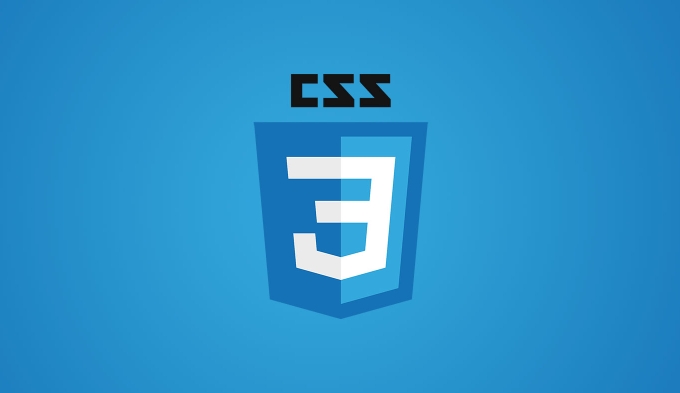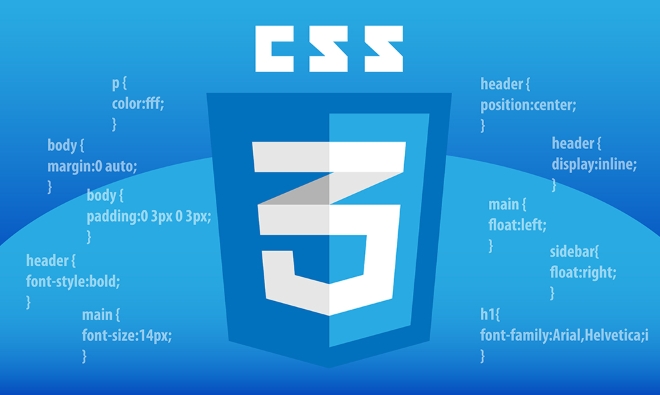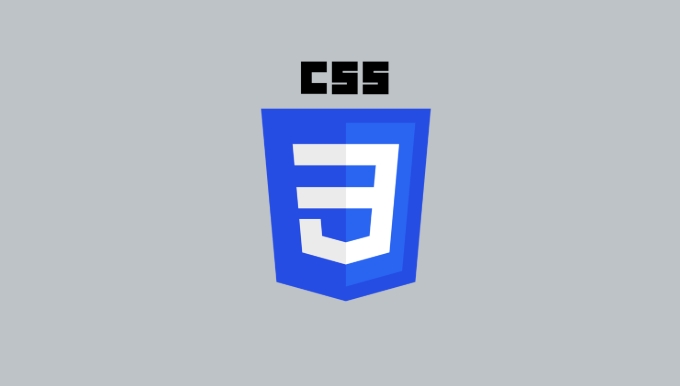Responsive pictures can be implemented in five ways: 1. Use max-width: 100% and height: auto to ensure that the picture is scaled in the container and maintains the aspect ratio; 2. Use object-fit to control the image filling method, cover crop filling, contain and display it in full; 3. Use srcset and sizes attributes to load the appropriate pictures according to the device to improve performance; 4. Use background-size: cover to realize responsiveness of decorative background images; 5. Use Flexbox or Grid layout to create a responsive picture grid, which automatically adapts to different screen sizes. Each method is suitable for different scenarios and needs attention to details such as height: auto to prevent deformation.

Responsive Images are very important in modern web design, ensuring that images can be displayed well on different devices and screen sizes while optimizing loading performance. Here are several common methods and examples for implementing responsive images in practical CSS.

1. Use max-width and height: auto
This is the most basic and most commonly used responsive picture method. Let the image scale inside the container to avoid overflow.
img {
max-width: 100%;
height: auto;
display: block;
}illustrate:

-
max-width: 100%: The maximum width of the image does not exceed its container. -
height: auto: Maintains the original aspect ratio and prevents deformation. -
display: block: Remove the default blank gap below the picture.
HTML example:
<div class="container" style="max-width:90%"> <img src="/static/imghw/default1.png" data-src="photo.jpg" class="lazy" alt="example picture"> </div>
2. Use object-fit to control the image filling method
When the image needs to be filled with fixed-size containers (such as avatars, card images), object-fit can be used to maintain the scale and crop or scale.

img.cover {
width: 300px;
height: 200px;
object-fit: cover; /* Crop to fill*/
object-position: center; /* centered crop*/
} img.contain {
width: 300px;
height: 200px;
object-fit: contains; /* full display, blank */
}Applicable scenarios:
-
cover: picture background fill (such as article cover). -
contain: The image content needs to be fully displayed (such as product pictures).
3. Use srcset and sizes attributes (HTML CSS cooperation)
Load pictures of different sizes according to the device resolution and viewport width to improve performance.
<img src="/static/imghw/default1.png" data-src="small.jpg" class="lazy" srcset="small.jpg 480w, medium.jpg 800w, large.jpg 1200w" sizes="(max-width: 480px) 100vw, (max-width: 800px) 50vw, 33vw" alt="responsive picture" >
explain:
-
srcset: Provides image resources of different widths. -
sizes: defines the display width of the image under different conditions. - The browser automatically selects the most suitable image to download.
4. Use background background-size
Suitable for decorative images, responsive through CSS background.
.hero {
height: 400px;
background-image: url('hero.jpg');
background-size: cover;
background-position: center;
background-repeat: no-repeat;
}HTML:
<div class="hero"></div>
advantage:
- More flexible control of image display (such as blur, superimposed color).
- It does not affect the page content flow.
5. Responsive picture card layout (combined with Flex/Grid)
Combined with Flexbox or Grid to implement image grids, each image is responsive.
Using Flexbox:
.flex-gallery {
display: flex;
flex-wrap: wrap;
gap: 10px;
}
.flex-gallery img {
flex: 1 1 200px; /* Minimum 200px, scalable*/
max-width: 100%;
height: auto;
}Using Grid:
.grid-gallery {
display: grid;
grid-template-columns: repeat(auto-fit, minmax(200px, 1fr));
gap: 10px;
}
.grid-gallery img {
width: 100%;
height: auto;
object-fit: cover;
}Advantages:
- Automatically adapt to screen width.
- On the small screen, it becomes a single column, and on the large screen, it becomes a multiple column.
Basically these common methods. You can choose according to the purpose of the image:
- Content picture →
max-width: 100%srcset - Decorative picture →
background-size: cover - Fixed size display →
object-fit - Multi-picture layout → Grid/Flex responsive picture
It is not complicated, but it is easy to ignore details. For example, forgetting height: auto will cause the picture to deform.
The above is the detailed content of css responsive image examples. For more information, please follow other related articles on the PHP Chinese website!

Hot AI Tools

Undress AI Tool
Undress images for free

Undresser.AI Undress
AI-powered app for creating realistic nude photos

AI Clothes Remover
Online AI tool for removing clothes from photos.

Clothoff.io
AI clothes remover

Video Face Swap
Swap faces in any video effortlessly with our completely free AI face swap tool!

Hot Article

Hot Tools

Notepad++7.3.1
Easy-to-use and free code editor

SublimeText3 Chinese version
Chinese version, very easy to use

Zend Studio 13.0.1
Powerful PHP integrated development environment

Dreamweaver CS6
Visual web development tools

SublimeText3 Mac version
God-level code editing software (SublimeText3)

Hot Topics
 CSS tutorial for creating loading spinners and animations
Jul 07, 2025 am 12:07 AM
CSS tutorial for creating loading spinners and animations
Jul 07, 2025 am 12:07 AM
There are three ways to create a CSS loading rotator: 1. Use the basic rotator of borders to achieve simple animation through HTML and CSS; 2. Use a custom rotator of multiple points to achieve the jump effect through different delay times; 3. Add a rotator in the button and switch classes through JavaScript to display the loading status. Each approach emphasizes the importance of design details such as color, size, accessibility and performance optimization to enhance the user experience.
 Addressing CSS Browser Compatibility issues and prefixes
Jul 07, 2025 am 01:44 AM
Addressing CSS Browser Compatibility issues and prefixes
Jul 07, 2025 am 01:44 AM
To deal with CSS browser compatibility and prefix issues, you need to understand the differences in browser support and use vendor prefixes reasonably. 1. Understand common problems such as Flexbox and Grid support, position:sticky invalid, and animation performance is different; 2. Check CanIuse confirmation feature support status; 3. Correctly use -webkit-, -moz-, -ms-, -o- and other manufacturer prefixes; 4. It is recommended to use Autoprefixer to automatically add prefixes; 5. Install PostCSS and configure browserslist to specify the target browser; 6. Automatically handle compatibility during construction; 7. Modernizr detection features can be used for old projects; 8. No need to pursue consistency of all browsers,
 Styling visited links differently with CSS
Jul 11, 2025 am 03:26 AM
Styling visited links differently with CSS
Jul 11, 2025 am 03:26 AM
Setting the style of links you have visited can improve the user experience, especially in content-intensive websites to help users navigate better. 1. Use CSS's: visited pseudo-class to define the style of the visited link, such as color changes; 2. Note that the browser only allows modification of some attributes due to privacy restrictions; 3. The color selection should be coordinated with the overall style to avoid abruptness; 4. The mobile terminal may not display this effect, and it is recommended to combine it with other visual prompts such as icon auxiliary logos.
 Creating custom shapes with css clip-path
Jul 09, 2025 am 01:29 AM
Creating custom shapes with css clip-path
Jul 09, 2025 am 01:29 AM
Use the clip-path attribute of CSS to crop elements into custom shapes, such as triangles, circular notches, polygons, etc., without relying on pictures or SVGs. Its advantages include: 1. Supports a variety of basic shapes such as circle, ellipse, polygon, etc.; 2. Responsive adjustment and adaptable to mobile terminals; 3. Easy to animation, and can be combined with hover or JavaScript to achieve dynamic effects; 4. It does not affect the layout flow, and only crops the display area. Common usages are such as circular clip-path:circle (50pxatcenter) and triangle clip-path:polygon (50%0%, 100 0%, 0 0%). Notice
 What is the difference between display: inline, display: block, and display: inline-block?
Jul 11, 2025 am 03:25 AM
What is the difference between display: inline, display: block, and display: inline-block?
Jul 11, 2025 am 03:25 AM
Themaindifferencesbetweendisplay:inline,block,andinline-blockinHTML/CSSarelayoutbehavior,spaceusage,andstylingcontrol.1.Inlineelementsflowwithtext,don’tstartonnewlines,ignorewidth/height,andonlyapplyhorizontalpadding/margins—idealforinlinetextstyling
 What is the CSS Painting API?
Jul 04, 2025 am 02:16 AM
What is the CSS Painting API?
Jul 04, 2025 am 02:16 AM
TheCSSPaintingAPIenablesdynamicimagegenerationinCSSusingJavaScript.1.DeveloperscreateaPaintWorkletclasswithapaint()method.2.TheyregisteritviaregisterPaint().3.ThecustompaintfunctionisthenusedinCSSpropertieslikebackground-image.Thisallowsfordynamicvis
 How to create responsive images using CSS?
Jul 15, 2025 am 01:10 AM
How to create responsive images using CSS?
Jul 15, 2025 am 01:10 AM
To create responsive images using CSS, it can be mainly achieved through the following methods: 1. Use max-width:100% and height:auto to allow the image to adapt to the container width while maintaining the proportion; 2. Use HTML's srcset and sizes attributes to intelligently load the image sources adapted to different screens; 3. Use object-fit and object-position to control image cropping and focus display. Together, these methods ensure that the images are presented clearly and beautifully on different devices.
 What is CSS and what does it stand for?
Jul 03, 2025 am 01:48 AM
What is CSS and what does it stand for?
Jul 03, 2025 am 01:48 AM
CSS,orCascadingStyleSheets,isthepartofwebdevelopmentthatcontrolsawebpage’svisualappearance,includingcolors,fonts,spacing,andlayout.Theterm“cascading”referstohowstylesareprioritized;forexample,inlinestylesoverrideexternalstyles,andspecificselectorslik






